
Curtain Sensors
Manual
Model Number of Beams Length Color
E-9680-10B25 10 79" Black
E-9660-8B25 8 60
1
/
8
" Black
E-9644-6B25 6 44
1
/
2
" Black
E-9622-4B25 4 22
1
/
2
" Black

ENFORCER Curtain Sensors
2 SECO-LARM U.S.A., Inc.
1
7
/
32
" (30.6mm)
1
5
/
16
" (33mm)
Table of Contents:
Features ....................................................... 2
Parts List ....................................................... 2
Dimensions ................................................... 2
Specifications ............................................... 2
Sample Installations ..................................... 3
Choosing a Location ................................. 3~4
Selectable 3-Channel Beam Frequency ....... 4
Mounting the Curtain Sensor .................... 4~5
Parts List:
1x Transmitter
1x Receiver
4x L-Brackets
1x Manual
Mounting hardware
Running the Wires ........................................ 5
Connecting the Wires ................................ 5~6
Removing the Lens Caps .............................. 6
Connecting One or More Sensors ................ 7
Mounting the Transmitter and Receiver and
Testing the Sensor .................................... 7
Tamper Protection ........................................ 8
Troubleshooting ............................................ 8
Specifications:
Dimensions:
22
1
/
2
" (572mm) – E-9622-4B25
44
1
/
2
" (1130mm) – E-9644-6B25
60
1
/
8
" (1527mm) – E-9660-8B25
79" (2007mm) – E-9680-10B25
Top View
Side View
Features:
Multi-frequency to reduce interference
between multiple units
Install on windows, doorways, skylights,
fence tops, and any place where space is
limited
Perfect for indoor and outdoor perimeter
security
Slimline design – 1
5
/
16
"x
7
/
8
" (33x22 mm)
Rugged aluminum construction
NO/NC Relay output
4, 6, 8, or 10 separate photoelectric beam
sensors; programmable trigger upon
breakin
g
of an
y
sin
g
le beam or simultaneous
breaking of any two adjacent beams
Anti-tamper circuit for use when power is cut
or end cap is removed
No synchronizing wires required
LED alignment indicator
L-brackets and mounting hardware included
Model E-9622-4B25 E-9644-6B25 E-9660-8B25 E-9680-10B25
Standby@12~24 VDC 89mA 94mA 102mA 110mA
A
ctive@12~24 VDC 73mA 79mA 92mA 100m
A
Dimensions
22
1
/
2
"x1
5
/
16
"x
7
/
8
"
(572x33x22 mm)
44
1
/
2
"x1
5
/
16
"x
7
/
8
"
(1130x33x22 mm)
60
1
/
8
"x1
5
/
16
"x
7
/
8
"
(1527x33x22 mm)
79"x1
5
/
16
"x
7
/
8
"
(2007x33x22 mm)
Response time 0.5~32.5 ms 0.5~48.5 ms 0.5~60 ms 0.5~70 ms
Maximum range Indoor: 50' (16m), outdoor: 25' (8m)
Detection method Simultaneous break of 2 adjacent beams or any single beam (programmable)
Output NO/NC Relay output, 1A@12~24 VDC
Operating temperature -49°~131° F (-45°~55° C)
Attenuation LED ON: Powered, aligned properly; Flashing: Beam broken or unaligned; OFF: No power
Enclosure / Case IP54 / Aluminum alloy
3
/
4
" (19.6mm)
7
/
8
"
(
22mm
)

ENFORCER Curtain Sensors
SECO-LARM U.S.A., Inc. 3
When used outdoors, place the curtain sensor under a roof or shelter. This will reduce the
chance of false alarms caused by rain or snow.
To prevent erratic operation and/or false alarms:
Wind will not directly cause false alarms, but
could cause leaves or similar objects to fly
into or otherwise obstruct the beams. Do
not mount near trees, bushes, or other leafy
vegetation (see Fig. 1).
Do not mount where water running off the
roof might break the beam (see Fig. 1). The
sensor and beams must be sheltered.
Do not mount near reflective surfaces, as this
could prevent the sensor from working
properly.
Typical Door/Window
Frame
Windows
Indoor Fence Tops
Garages/Gates/Walls
Skylights
Fig. 1: Beware Natural Interference
Tree or shrub leaves
Rain running directly
off roof thru beams
Important:
Do not connect to power until the sensor is completely installed and the installation has been
double-checked.
Sample Installations:
Choosing a Location:

ENFORCER Curtain Sensors
4 SECO-LARM U.S.A., Inc.
Do not mount where the transmitter or
receiver could be splashed by water or
mud.
Do not mount where unit could be
suddenly exposed to a bright light,
such as a floodlight or a passing car’s
headlight.
Do not let sunlight or any direct beam of
light shine directly on the curtain beam
sensor. If unavoidable, mount so the
transmitter, not the receiver, faces the
sun (see Fig. 2).
Do not mount where animals or other objects could accidentally break the beams.
Choosing a Location, continued:
Fig. 2: Orientation to Sun
The sensor beam frequency can be set at different
frequencies on-site to avoid interference from multiple
curtain sensors nearby. To select between three different
beam frequencies, set the jumper of the transmitter side
and receiver side (see Fig. 3).
Note:
1. If the frequency is changed, power must be cycled on the transmitter and receiver
after the new frequency is selected.
2. Both the transmitter and the receiver of each pair must be set to matching
frequencies to work together correctly.
1. Find a suitable location (see Fig. 1):
a. The transmitter and receiver can be
mounted at any angle as long as they are
parallel to each other and directly facing
each other, and as long as the wires
come out of the same ends of both units
(see Fig. 4).
b. If using multiple curtain sensors, be sure
to set each for a different frequency (see
Selectable 3-Channel Beam Frequency
above).
c. The transmitter and receiver must not be
separated by more than 50 feet indoors
and 25 feet outdoors.
TX
RX
RX TX
NO
OK*
*Only if unavoidable. Mount so
transmitter, not receiver, faces
the sun.
Selectable 3-Channel Beam Frequency:
Mounting the Curtain Sensor:
Frequenc
y
A
Frequency B
Frequency C
Fig. 3:
Jumper
Position
JMP3
{
Fig. 4: Orientation
Note: If the wires will
be running out the end,
place sensors so wires
are at the bottom. If
sensors must be placed
so wires are at top,
seal the opening with
silicone to prevent
water from leakin
g
in.
OK
NO
Terminal
blocks
Terminal
block
Terminal
block

ENFORCER Curtain Sensors
SECO-LARM U.S.A., Inc. 5
Run four wires (2x power and 2x alarm signal) from
the alarm control panel to the receiver of the curtain
sensor. Shielded cable is strongly suggested. See
Table 1 to the right for maximum wire length. Two
power wires must also be run to the transmitter.
It may be more convenient to connect the transmitter’s two power wires to the receiver’s power
wires. In this case, run six wires to the receiver: two wires to the power source, two for the alarm
signal, and two to the transmitter.
Note:
1. If burying the wires is required, make sure to run them through electrical conduit.
Shielded cable is strongly suggested.
2. If the wires are run along the wall, using an armored cable is strongly suggested.
2. Mount the transmitter and the receiver so that the
surface-mounted wires do not come out from above
the units. This is to prevent water from entering via
the wire holes. If this is unavoidable, use silicone to
completely cover the area where the wires come out
the holes to prevent water from entering (see Fig. 4).
3. Once a suitable mounting location has been found,
remove the covers of the end caps (see Fig. 5), and
pull the tamper buttons out of the end caps (one per
transmitter or receiver) and locate the mounting holes.
Using these holes as a template, mark their location on the wall with a pencil.
4. Connect the wires (see Figs. 6 and 7) before permanently mounting the units to the wall.
Fi
g
. 5:
End
Cap
Cover
Plastic cap
hiding screw
Screw
Tam
p
er Button
1. Receiver:
a. Pull the end cap with the red wire leads off the
receiver, and slide the PCB out far enough to
expose the wiring block.
b. Run the four wires (or six wires, if connecting
the transmitter’s power wires to the receiver)
through one or more of the three ground
knockout holes in the end cap near where the
tamper button wires run, and connect them to
the wiring block (see Fig. 6).
c. Program the receiver (see Table 2 on pg. 6).
d. Carefully push the PCB back into the case
and reinsert the end cap.
e. Reinsert the cap over the tamper button and small tamper cap.
To Alarm Control Panel
12~24 VDC
Fi
g
. 7: Wirin
g
the Transmitter
Running the Wires:
Table 1: Maximum Wire Length
Voltage Gauge Max. length
12VDC
A
WG 22 1800' (550m)
12VDC
A
WG 20 2600' (800m)
24VDC
A
WG 22 2600' (800m)
24VDC
A
WG 20 3900' (1200m)
Mounting the Curtain Sensor, continued:
Connecting the Wires:
Fig. 6:
Wiring the
Receiver
To Alarm
Control Panel
12~24 VDC
To Alarm Control Panel
COM + N.O. or
COM + N.C.
}
COM
N.C.
N.O.

ENFORCER Curtain Sensors
6 SECO-LARM U.S.A., Inc.
For best results when the curtain sensor is mounted outdoors, remove the transmitter lens caps
(DO NOT remove the receiver lens caps!).
To remove the lens caps (see Fig. 8):
1. Slide the PCB out of the transmitter (see
"Connecting the Wires" on pg. 5~6).
2. Carefully pull the lens cap off of all the lenses
(8 for the E-9622-4B25, 12 for the E-9644-6B25,
16 for the E-9660-8B25, 20 for the E-9680-10B25).
3. Slide the PCB back in (see "Connecting the Wires" on pg. 5~6).
2. Transmitter:
a. Pull the end cap with the red wire leads off the transmitter, and slide the PCB out far
enough to expose the wiring block.
b. Run the two power wires through one or more of the three round knockout holes in the end
cap near where the tamper button wires run; connect them to the wiring block (see Fig. 7).
c. Program the transmitter (see Table 2 below).
d. Carefully push the PCB back into the case and reinsert the end cap.
e. Reinsert the cap over the tamper button and small tamper cap.
Note:
1. Screw the wires tightly to avoid slipping off the terminals, but not so tight that they break.
2. Unused terminal screws should be tightened.
3. Grounding may be necessary, depending on the location.
Fig. 8: Removing the Lens Caps
Connecting the Wires, continued:
*Both JMP2 and SA1 should be taken off or left on at the same time.
Removing the Lens Caps (for outdoor use only):
Table 2: Transmitter and Receiver Programming
Receiver Transmitter
Jumper name
JMP1 JMP0
LED Operation
1 C 2
LED ON if power is
present and beams
are aligned.
LED flashes when
beams are broken
.
1 C 2
LED OFF if power is
present and beams
are aligned.
LED flashes when
beams are broken.
LED ON
LED ON if
power
is present.
LED OFF
LED OFF at
all times.
Jumper name
JMP2 SA1
Number of beams
to interrupt to
trigger transmitter
and receiver
1 Beam
Receiver triggers if
any single beam is
interrupted.*
2 Beams
Receiver triggers
only if 2 adjacent
beams interrupted
at same time.*
1 Beam
Transmitter
triggers if any
single beam is
interrupted.*
2 Beams
Transmitter triggers
only if 2 adjacent
beams interrupted at
same time.*

ENFORCER Curtain Sensors
SECO-LARM U.S.A., Inc. 7
Several units can be connected together in parallel to the same power supply output and alarm
input of an alarm control panel.
Please reference Fig. 6 & 7 for terminal blocks.
1. Temporarily mount the transmitter and receiver to where they are expected to be mounted, so
the mounting position can be changed if necessary.
2. Connect the transmitter and the receiver.
3. Once it is powered up, test the curtain sensor by breaking two adjacent beams or any single
beam (depending on programming).
4. The curtain sensor also has red LEDs which can be used for testing purposes (see Table 2).
5. After the curtain sensor is tested and aligned, permanently mount it.
6. After it is mounted, test the curtain sensor again.
Connecting One or More Sensors:
Mounting the Transmitter and Receiver and Testing the Sensor:
Standard
}
Power
} Alarm signal
Control panel
(12VDC)
Dual Sensors, Separate Alarm Channels
Transmitter Receiver
Receiver
Transmitter
} Power
} Alarm (ch. 1)
Control panel
(12VDC)
} Alarm (ch. 2)
In-line, Single Alarm Channel
}
Power
} Alarm signal
Control panel
(12VDC)
Transmitter Receiver
Receiver
Transmitter
Transmitter Receiver

ENFORCER Curtain Sensors
8 SECO-LARM U.S.A., Inc.
The receiver and the transmitter both have a tamper switch on one end to protect a
g
ainst someone
attempting to open the unit. However, there is no separate tamper output to the alarm control
panel. Instead, the alarm output is triggered if the cover of the end cap with the tamper button is
removed, if the transmitter or receiver is moved out of alignment, or if power is disconnected.
NOTICE: The SECO-LARM policy is one of continual development and improvement. For that reason, SECO-LARM
reserves the right to change specifications without notice. SECO-LARM is also not responsible for misprints. All trademarks
are the property of SECO-LARM U.S.A., Inc. or their respective owners. Copyright © 2019 SECO-LARM U.S.A., Inc. All
rights reserved.
LIMITED WARRANTY: This SECO-LARM product is warranted against defects in material and workmanship while
used in normal service for one (1) year from the date of sale to the original customer. SECO-LARM’s obligation is limited to
the repair or replacement of any defective part if the unit is returned, transportation prepaid, to SECO-LARM. This Warranty
is void if damage is caused by or attributed to acts of God, physical or electrical misuse or abuse, neglect, repair o
r
alteration, improper or abnormal usage, or faulty installation, or if for any other reason SECO-LARM determines that such
equipment is not operating properly as a result of causes other than defects in material and workmanship. The sole
obligation of SECO
-
LARM and the purchaser’s exclusive remedy shall be limited to the replacement or repair only, a
t
SECO-LARM’s option. In no event shall SECO-LARM be liable for any special, collateral, incidental, or consequential
personal or property damage of any kind to the purchaser or anyone else.
Tamper Protection:
Troubleshooting:
Transmitter LED will not turn
ON
Test the power and ground wire with a voltage meter to
ensure power is connected and is of the correct voltage.
Change the position of the transmitter jumper "JMP0"
(see page 6).
Receiver LED will not turn ON
Test the power and ground wire with a voltage meter to
ensure power is connected and is of the correct voltage.
Receiver LED will not turn ON
unless the sensor is triggered
Change the position of the receiver jumper"JMP1"
(see page 6).
Receiver LED flashes
continuously
Check that the transmitter and receiver are aligned.
Does not trigger when beam is
broken
Remount the curtain sensor awa
y
from an
y
shin
y
surface,
or repaint the surface to cut down on reflection.
Receiver continuously triggers
the alarm
Check that the transmitter and receiver are aligned.
Check that the tamper button and the cover for the
tamper button are mounted correctly.
False alarm
Re-install so that multiple sensors do not interfere with
each other.
Cut back leafy vegetation.
Re-mount away from the edge of a roof.
Mount under a roof or shelter.
SECO-LARM
®
U.S.A., Inc.
16842 Millikan Avenue, Irvine, CA 92606 Website: www.seco-larm.com
Phone: (949) 261-2999 | (800) 662-0800 Email: [email protected]
PICTN1
MI_E-96xx-xxB25_191114.doc
x
-
 1
1
-
 2
2
-
 3
3
-
 4
4
-
 5
5
-
 6
6
-
 7
7
-
 8
8
SECO-LARM E-9660-8B25 Owner's manual
- Type
- Owner's manual
- This manual is also suitable for
Ask a question and I''ll find the answer in the document
Finding information in a document is now easier with AI
Related papers
-
SECO-LARM ENFORCER Series User manual
-
SECO-LARM SD-9773-KNEVQ User manual
-
SECO-LARM SLI Enforcer EAP-1D1Q Owner's manual
-
SECO-LARM SD-H412 Owner's manual
-
SECO-LARM ENFORCER E-964-Q660Q Owner's manual
-
SECO-LARM SD-9963-KSGQ Owner's manual
-
SECO-LARM SS-072Q User manual
-
SECO-LARM SS-072Q User manual
-
SECO-LARM E-960-D90Q Owner's manual
-
SECO-LARM E-9679-8B190Q Owner's manual
Other documents
-
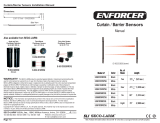 ENFORCER E-9679C8B25Q Installation guide
ENFORCER E-9679C8B25Q Installation guide
-
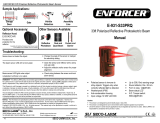 ENFORCER E-931-S33PRQ Installation guide
ENFORCER E-931-S33PRQ Installation guide
-
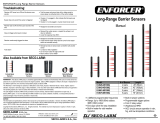 ENFORCER E-9626-2B190Q Installation guide
ENFORCER E-9626-2B190Q Installation guide
-
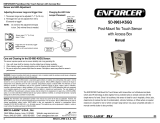 ENFORCER SD-9963-KSGQ Installation guide
ENFORCER SD-9963-KSGQ Installation guide
-
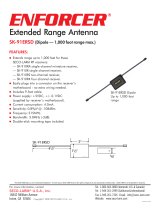 SECO-LARM USA SK-91ERSD User manual
SECO-LARM USA SK-91ERSD User manual
-
Bosch DS422I User manual
-
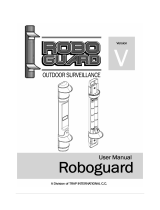 Trap Roboguard User manual
Trap Roboguard User manual
-
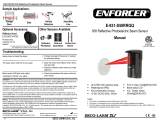 ENFORCER E-931-S50RRGQ Installation guide
ENFORCER E-931-S50RRGQ Installation guide
-
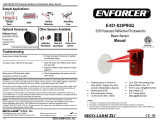 ENFORCER E-931-S33PRGQ Installation guide
ENFORCER E-931-S33PRGQ Installation guide
-
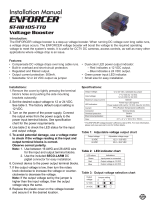 SECO-LARM USA ST-HB105-TTQ User manual
SECO-LARM USA ST-HB105-TTQ User manual
















